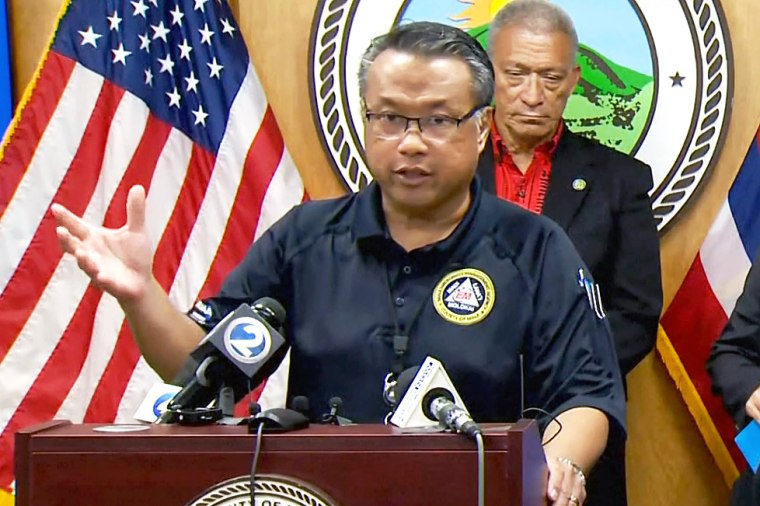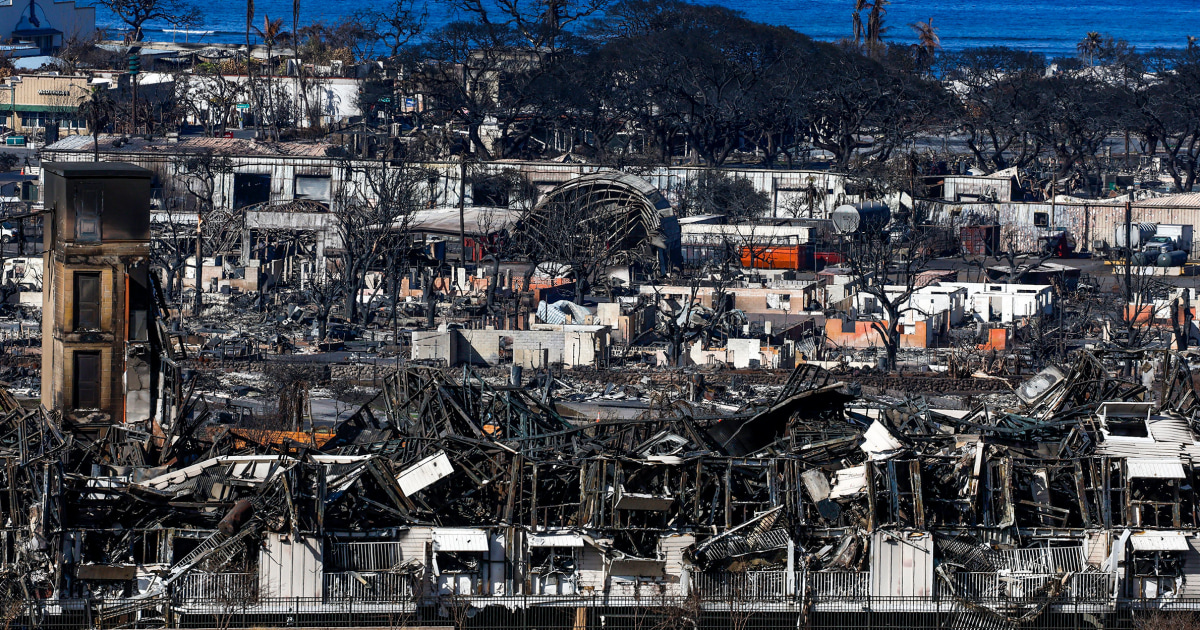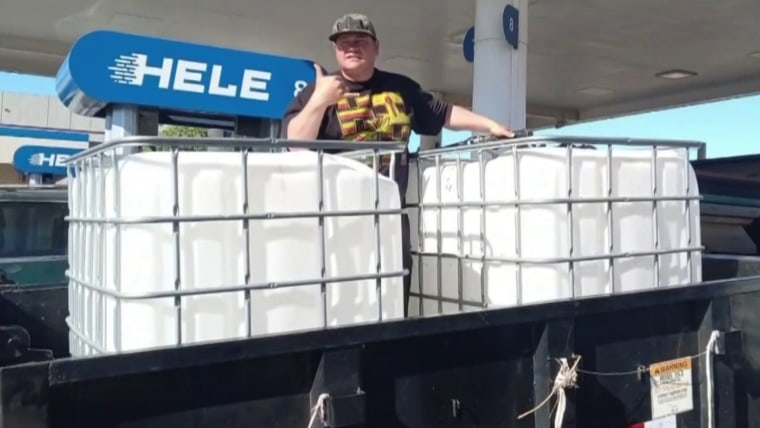Maui’s embattled emergency management director had a pattern of downplaying the importance of the island’s outdoor emergency siren system in the years before this month’s devastating fire that destroyed the historic town of Lahaina and killed more than 100 people, public safety meeting records show.
In meetings in 2019, 2020 and 2021, Herman Andaya, administrator of the Maui County Emergency Management Agency, repeatedly called sounding the civil service sirens “a last resort,” according to meeting transcripts of the county’s public safety commission.
Andaya’s comments on the sirens came during his explanations to commissioners in recent years after monthly tests found some were not working and, in one case, after a false alarm.
Andaya couldn’t be immediately reached for comment Thursday.
He now faces intense criticism because his agency did not sound the sirens before this month’s devastating fire.
In a 2019 meeting, Andaya called sirens “kind of a last resort kind of thing,” adding that “for the most part, people don’t get their information from sirens.”
During a July 2020 public safety commission meeting, when Andaya reported to public safety commissioners that only 58 of the island’s more than 70 sirens worked during the latest monthly test, he explained that the state process for fixing the sirens was slow but officials had several other means to notify the public during emergencies.
One commissioner, Travis Tancayo, a retired batallion chief for the fire department, responded: “I still feel sirens are important.”
“As we all know, you lose electricity and the phones go out anytime there’s a major emergency,” Tancayo said, adding that “we should put good effort in continuing to update and keep our siren systems running good and not depend totally on phones and other means.”
“Sorry, I don’t mean to diminish the value of sirens,” Andaya said. “I totally agree with you, chief, that the sirens are important.”
Still, he again described them as a “last resort” in at least one meeting the next year, meeting transcripts show.
“From what we understand, the siren is kind of a last resort, you know,” he said at the meeting in February 2021. “It’s for people who are outside, outdoors, who don’t have their phones on them, who are not close to a TV or radio or, you know, things like that. So those — that’s what the siren is really meant for.”
During a news conference Wednesday, Andaya defended his agency for not sounding the alarms, saying he did not regret that decision. He said that sounding the alarms could have sent people into harm’s way.

“The public is trained to seek higher ground in the event that the siren is sounded,” Andaya said. “Had we sounded the siren that night, we were afraid that people would have gone mauka,” using a Hawaiian word that means “to the mountainside.”
“And if that’s the case, then they would have gone into the fire,” he added.
Maui’s sirens are part of the state-owned Outdoor Emergency Siren System, one part of Hawaii’s Statewide Alert and Warning System. Known as SAWS, the system is used to warn the public about natural disasters and other emergencies. It also includes emergency warnings that are broadcasted on TV and radio, and wireless emergency alerts texted to cellphones. Additional systems on Maui can make automated phone calls and send alerts to social media platforms.
When defending his decision Wednesday, Andaya said the siren “system has not been used either in Maui or in other jurisdictions around the state” for wildfires. For those, Andaya said, his agency’s protocol has been to broadcast and text mass-notification alerts and warnings to the public. He said the siren system is primarily used to warn the public of tsunamis.
“It is our practice to use the most effective means of conveying an emergency message to the public during a wildland fire,” he said.
In an informational video about the sirens put out by the Hawaii Emergency Management Agency, telecom branch chief Ryan Hirae noted that along with tsunamis, “we also use sirens for hurricanes, brush fires, flooding, lava, HAZMAT conditions, or in a terrorist event.”
The Maui County website about testing of the All-Hazard Statewide Outdoor Warning Siren System also lists wildfires as among the hazards for which it can be used.
Tancayo, the former public safety commissioner, told NBC News in an interview Thursday that during the 2020 meeting, he was trying to impress upon Andaya the importance of the siren system because of his experience battling massive brush fires that burned uncontrollably on Molokai early in his career in the 1990s.
“Because of my experience, I saw things differently” than Andaya did, he said. “Where he’s coming from, and with the training he’s got, they’re gonna be telling him one thing. But I had first-hand experience of people trying to evacuate homes here on Molokai, and I know how hectic it can be.”
Tancayo said he’s not aware of Maui County ever using the sirens in a brush fire, but added he believes the sirens should have been activated during this month’s fire.
“I think it would have helped more than not helped,” he said. “I think it would have maybe brought people out of their homes. There’s a lot of the old folks that are hard of hearing or don’t use cell phones. Maybe the sirens would have made them at least try to turn on the radio or try to just come out and see what was going on.”
Since the Aug. 8 fire, some survivors have said that some of the victims could have made it out had the sirens been sounded.
Kekoa Lansford, who lost his Lahaina home in the fire, said the lack of sirens and problems with other alerts cost cost people their lives.
“An extra 15 minutes and a lot of people would have lived,” he said.

